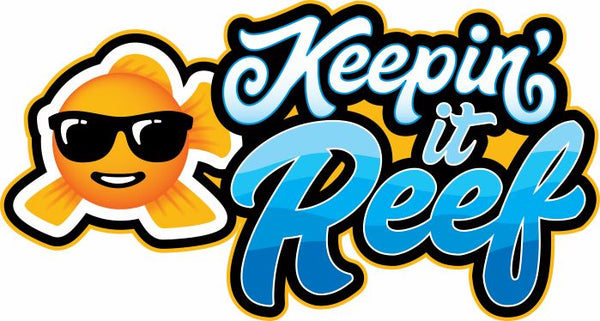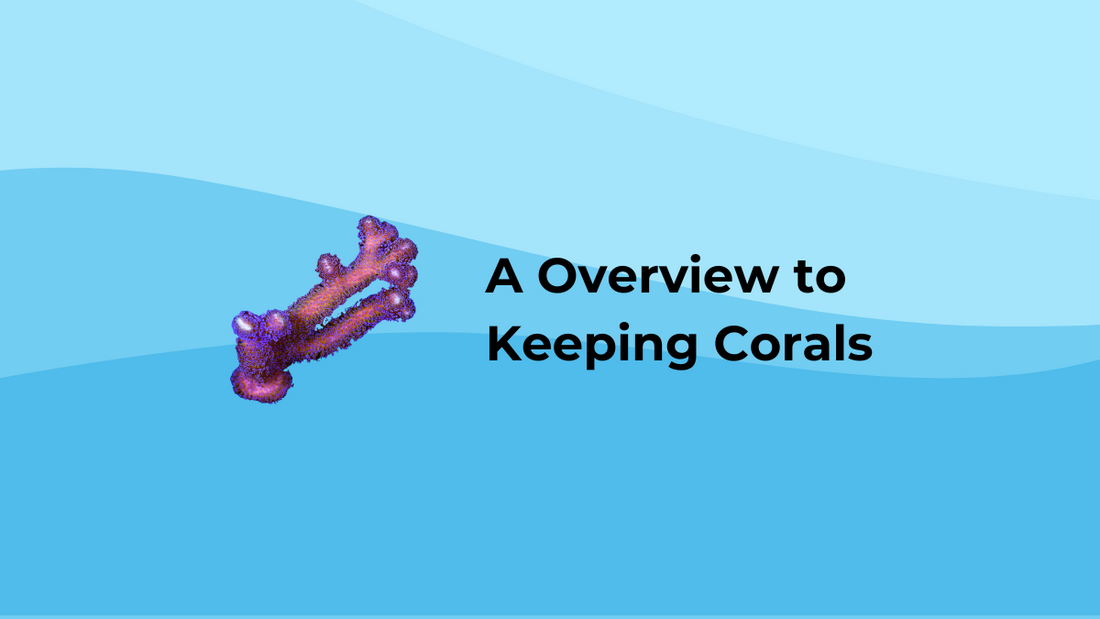How do you keep saltwater corals? This is a very common question for beginners and experienced tank owners alike. While the best answers for specific corals can take a long time to find, this guide gives you a fundamental overview of what to watch for. Keeping saltwater corals can be one of the most rewarding aspects of maintaining a marine aquarium. These vibrant and intricate organisms not only add beauty to your tank but also contribute to a thriving underwater ecosystem. However, caring for corals requires dedication, knowledge, and the right equipment. In this blog post, we’ll walk you through the essential steps to ensure your saltwater corals stay healthy and flourish.
Understanding Coral Needs
Before diving into the specifics, it's crucial to understand the basic needs of corals. Corals are living organisms that require stable water parameters, adequate lighting, and proper water flow to thrive. They can be broadly classified into two main types: soft corals and hard corals (which include large polyp stony corals, LPS, and small polyp stony corals, SPS).
1. Maintaining Water Quality
Water quality is the cornerstone of a healthy coral reef tank. Here are the key parameters you need to monitor:
- Salinity: Keep the salinity between 1.023 and 1.025 specific gravity.
- Temperature: Maintain a stable temperature between 75°F and 78°F.
- pH: The ideal pH range is between 8.1 and 8.4.
- Alkalinity: Aim for 8-12 dKH (degrees of carbonate hardness).
- Calcium: Corals require calcium for skeletal growth, so levels should be between 400-450 ppm.
- Magnesium: Maintain levels between 1250-1350 ppm.
- Nitrates and Phosphates: Generally speaking, keep nitrates below 10 ppm and phosphates below 0.03 ppm to prevent algae overgrowth and stress on corals. There are beautiful reef systems out there with parameters much higher than this.
Different types of corals consume these elements at different rates. You must constantly monitor the levels of these parameters as your coral load increases or decreases.
Regular water testing and changes generally are essential. Invest in high-quality test kits and perform weekly water changes of 10-15% to keep parameters in check.
2. Providing Proper Lighting
Corals rely on symbiotic algae called zooxanthellae, which live within their tissues and provide nutrients through photosynthesis. The type and intensity of lighting are crucial for this process:
- LED Lighting: Modern LED systems offer customizable spectrums and intensity, making them a popular choice.
- T5 Fluorescent: These lights provide broad coverage and are suitable for many types of corals.
- Metal Halide: Best for tanks with SPS corals that require intense light.
Ensure your lights are on for 8-12 hours daily, simulating a natural day/night cycle. Adjust the intensity based on the specific needs of your corals, as some may require more light than others.
3. Ensuring Adequate Water Flow
Water movement is essential for corals as it helps in the exchange of gases, removal of waste, and delivery of nutrients. Use powerheads or wavemakers to create a natural, turbulent flow within the tank. Avoid direct, strong currents on corals as it can cause damage. Instead, aim for a gentle, random flow that mimics ocean conditions.
4. Feeding Your Corals
While zooxanthellae provide most of the nutrients corals need, many corals also benefit from supplemental feeding. Here are some options:
- Phytoplankton and Zooplankton: Liquid or powdered forms can be added directly to the tank.
- Coral Pellets or Powdered Food: Target feed using a turkey baster or pipette to deliver food directly to the corals.
- Frozen Food: Thaw and finely chop food like brine shrimp or mysis shrimp for larger polyp corals.
Feed your corals 1-2 times a week, observing their response to adjust the frequency and amount.
5. Choosing Compatible Coral Species
Not all corals can coexist peacefully. Some corals engage in chemical warfare, releasing toxins that can harm neighboring corals. Research the compatibility of species before adding them to your tank. For beginners, start with hardy corals like mushrooms, zoanthids, and some LPS corals like hammer and torch corals.
6. Monitoring and Troubleshooting
Regular observation is key to early detection of potential problems. Look for signs of stress, such as bleaching, tissue recession, or unusual color changes. Common issues include:
- Algae Overgrowth: Often a result of high nitrates and phosphates. Reduce feeding, increase water changes, and consider adding algae-eating organisms.
- Pests and Parasites: Regularly inspect corals for pests like flatworms or nudibranchs. Quarantine new additions and treat infestations promptly.
- Diseases: Coral diseases can spread quickly. If you notice affected corals, isolate them and seek specific treatments.
Conclusion
Keeping saltwater corals healthy requires a blend of science and art. By maintaining stable water parameters, providing appropriate lighting and flow, and feeding your corals, you can create a thriving reef ecosystem. Remember, patience and consistency are key. As you gain experience and knowledge, you’ll be rewarded with a vibrant and dynamic underwater world that is both a joy to observe and a testament to your dedication and care. It's worth mentioning that some beautiful and thriving reef tanks break all the rules we've outlined in this article. Nothing is better than getting close to the industry guidelines, then visually monitoring your corals health, growth, and polyp extension for signs of happiness. If your corals are happy, keep doing what you're doing. Don't speed up, don't slow down. It's that simple. Happy reefing!

